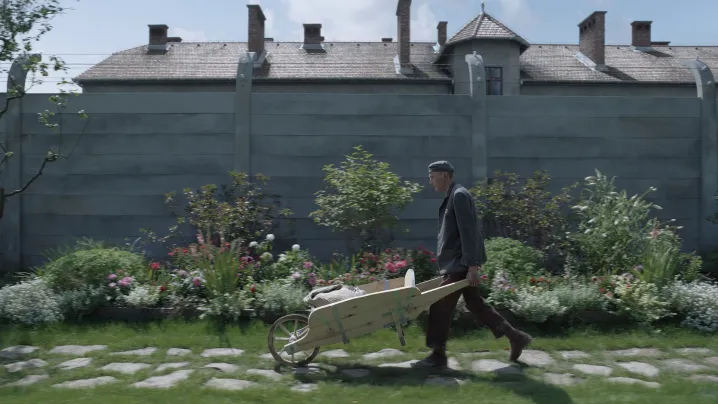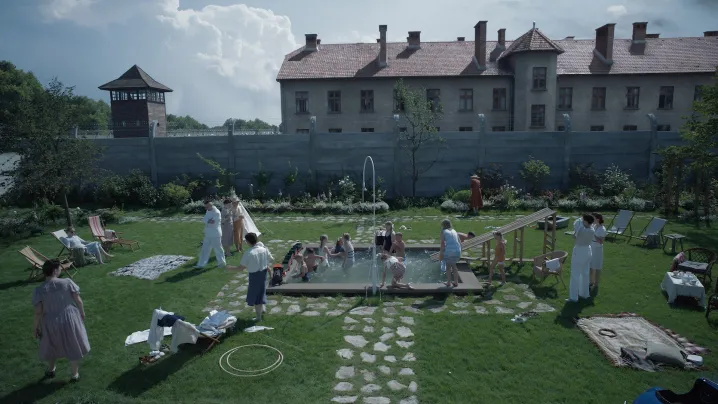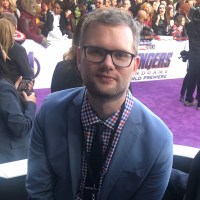
One of the year’s most talked about movies, not to mention one of the best, is Jonathan Glazer’s The Zone of Interest. (Oppenheimer is a close second.) Adapted from Martin Amis’s novel, the movie initially seems like a portrait of a working-class German family in the early 20th century. It’s only gradually revealed that the family is that of a Nazi officer, and their house is next to one of the most infamous concentration camps ever to exist, Auschwitz.
Part of the effectiveness of the movie is its sound design, which is tasked with communicating all the horrors of the Holocaust as nothing is ever explicitly shown. The audience never sees any overt acts of violence, and no one is killed onscreen. Yet you still feel the full weight of the genocide, and that’s thanks in part to Johnnie Burn, the movie’s sound designer and supervising sound editor. Burn talked to Digital Trends about his long working relationship with Glazer, the demands of researching such a weighty subject, and how he created “the sound of death” for the film.
Digital Trends: Johnnie, after The Zone of Interest ended, I turned to the person I was watching it with and said to him, “That movie had amazing sound design.” That’s not something I usually say after a movie, which speaks to your accomplishment. Did you know going in that the sound design would be so key to the movie’s overall effectiveness?
Johnnie Burn: Well, yes and no. I’ve worked with Jonathan for nearly 25 years. When we did Under the Skin together in 2013, we learned a lot of techniques that we carried forward onto this film. A couple of years before shooting The Zone of Interest, he gave me the script, and he was very clear that it was going to be two different films: the film you see and the film you hear.
We went through the process of making the film, like editing it and getting everything into place before we even began putting any of the sounds of the Holocaust in there because we felt that that was the best way to do it.
The script had five or six references to sounds the audience hears from over the wall, but ultimately, we realized those sounds needed to be a constant presence throughout the movie. Once we saw a complete cut for the first time, we were completely floored by how it all worked together. I didn’t know it was going to be as powerful as it turned out to be.

You mentioned the script didn’t outline all the sounds we would be hearing. That was you; that was your part. You decided, OK, I want the crematorium of the camp to be a constant sound that we keep on hearing. Is that right?
We didn’t originally conceive it as such. We intended to make the sound of the machine of death. And so, what that sound is is a combination of many different sounds that make a low but consistent rumble. I can totally understand why you thought it was just the crematorium, though. It is, but it also isn’t.
And that conceit wasn’t in our first screening of the film. When we first presented it to A24, Chris Oddy, the production designer, pulled me aside afterward and said, “You still got this place sounding too much like a country park or something. It needs to be more industrious. That was what was happening there. You know, it was millions of people [being slaughtered].” And so, we upgraded the intensity level of the sound design. It was at the next screening after we made this change that caused everyone involved to think, “Wow, the film really works.”
How do you even create the sound of death? What went into doing the research and coming up with something that remained true to the historical event while also fitting into the narrative of the movie?
I must confess that doing the research really wasn’t enjoyable. To gather the sounds that we needed, I knew that credibility was important. The year before the shoot was devoted to research, like reading lots of books about Auschwitz and understanding everything about the correct types of vehicles and types of guns that were used at the camp. That allowed us to get certain sounds that were as accurate as possible like recording a gun being shot at the correct distance and things like that.

A lot of my research involved reading witness testimony. I had a 600-page document of events that happened and testimony from survivors and guards. We used that to go about recording what we could and recreating specific events that we read about and were told about. And from that, I created a sound library for the film. So I had many, many hours of different types of sounds like painful human sounds, sounds of crematoriums, sounds of industrial furnaces, and sounds of the manufacturing machinery that the camp possessed and the prisoners had to operate.
Jonathan and I used this library once we got through the post-production phase. The sounds of death were born from us researching everything that had that would have been heard at Auschwitz in that period and trying as best as possible to recreate that with as much respect to what happened there as possible.
With something like The Zone of Interest, how do you balance the demands of being historically accurate with the artistic intentions that you and Jonathan have?
Well, we didn’t want to make a salacious movie that peddled any form of exaggerated or false dramatization. We tried to scientifically reproduce with as much faithfulness as possible about what we knew happened at that place and time.
We were very truthful about depicting how many deaths would happen daily and how many gunshots you would hear. The rate of death there was staggering, so in terms of what we depicted, I think we kind of underplayed it. But certainly, the whole way through the process, we were horribly aware of our responsibility not to overelaborate or to shock people just for the sake of shocking them. There was a long process of removing sounds or anything we thought was too much or unnecessary.
We also didn’t want to expose the audience to too much pain, either. We felt that it was better for the audience to be a bit uncertain as to what exactly they heard rather than have it too graphically spelled out for them. Jonathan and I wanted a film that was as close to a documentary and factual as we possibly could.

What was the most difficult part about working on the movie?
On an emotional level, it was tough. The last thing we wanted was something that sounded like a bunch of actors in a voice booth pretending to have an awful time. Recreating the sounds of a mass genocide took its toll. I noticed a few weeks into production I started to feel a little bit depressed. I’m pretty sure that cloud has lifted now. [Laughs] But all my colleagues who worked on the film went through a very difficult process from beginning to end. It was very rewarding and pleasurable, but difficult as well.
On a technical level, editing everything together was challenging. There were hidden cameras and microphones throughout the picture. Every take had 20 different microphones because we didn’t want a sound man with a boom pole standing in the room to remind the actors that they were on a film set. Jonathan described the production as being like Big Brother in a Nazi house.
Editing together all the dialogue and sounds from those 20 different microphones and making all the sound transitions appear seamless was technically the most difficult thing I had to do on The Zone of Interest.
You’ve worked with Jonathan since the beginning of his career. Can you describe how your work has progressed with him throughout the years and what was different this time on The Zone of Interest?
Jon completely understands the power of sound to function as a counter-narrative. When I know I have a job from Jonathan Glazer coming in, I need to set aside double the time for anyone else because it really will be an extreme undertaking. It’s always incredibly rigorous with Jonathan. If I’m going to record any sound for his film, he needs to know that it will be researched thoroughly. And if I’m going to use actors, they have to be cast thoroughly, and everything needs an enormously high level of rigor to it.
How much has he changed throughout the years? Well, he’s always been pretty difficult. [Laughs] On Under the Skin, we learned about going out into the real world, recording sound, and accepting the fact that real-world sound has anomalies and aberrations that you wouldn’t normally choose to have if you recorded it in the studio. It’s those oddities that make it more interesting and bring out the humanity in things. I think the main thing we’ve learned is how to make natural sound be more cinematic. And that’s what is present in The Zone of Interest.
The Zone of Interest is now playing in select theaters. It expands nationwide throughout December.



